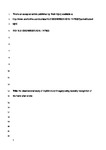An observational study of implicit motor imagery using laterality recognition of the hand after stroke
Date
2016-06-13Author
Subject
Metadata
Show full item recordAbstract
OBJECTIVE: To explore the relationship between laterality recognition after stroke and impairments in attention, 3D object rotation and functional ability. DESIGN: Observational cross-sectional study. SETTING: Acute care teaching hospital. PARTICIPANTS: Thirty-two acute and sub-acute people with stroke and 36 healthy, age-matched controls. MAIN OUTCOME MEASURES: Laterality recognition, attention and mental rotation of objects. Within the stroke group, the relationship between laterality recognition and functional ability, neglect, hemianopia and dyspraxia were further explored. RESULTS: People with stroke were significantly less accurate (69% vs 80%) and showed delayed reaction times (3.0 vs 1.9 seconds) when determining the laterality of a pictured hand. Deficits either in accuracy or reaction times were seen in 53% of people with stroke. The accuracy of laterality recognition was associated with reduced functional ability (R(2) = 0.21), less accurate mental rotation of objects (R(2) = 0.20) and dyspraxia (p = 0.03). CONCLUSION: Implicit motor imagery is affected in a significant number of patients after stroke with these deficits related to lesions to the motor networks as well as other deficits seen after stroke. This research provides new insights into how laterality recognition is related to a number of other deficits after stroke, including the mental rotation of 3D objects, attention and dyspraxia. Further research is required to determine if treatment programmes can improve deficits in laterality recognition and impact functional outcomes after stroke.
Collections
Publisher
Place of Publication
Journal
Volume
Issue
Pagination
Author URL
Recommended, similar items
The following license files are associated with this item:


